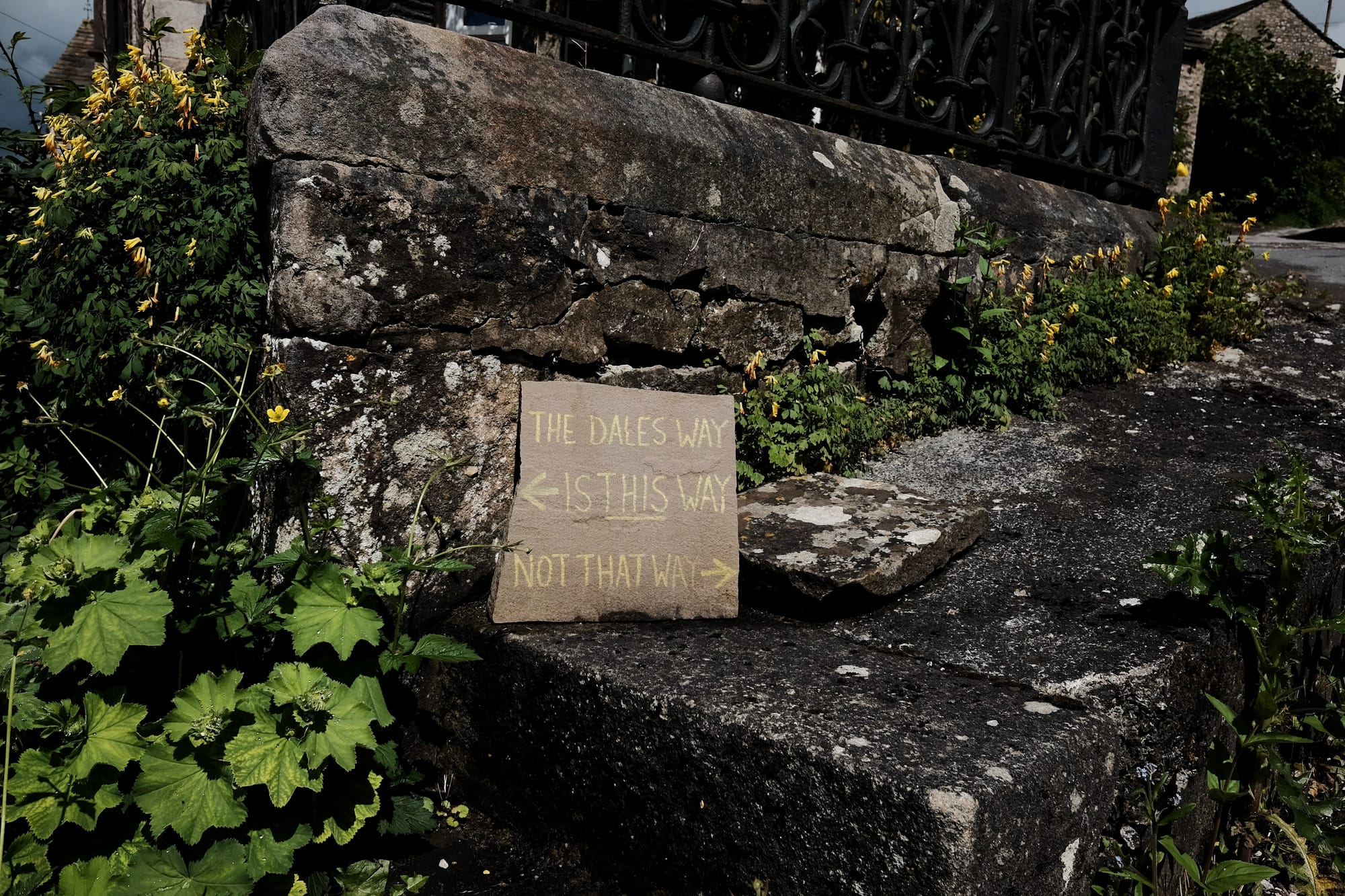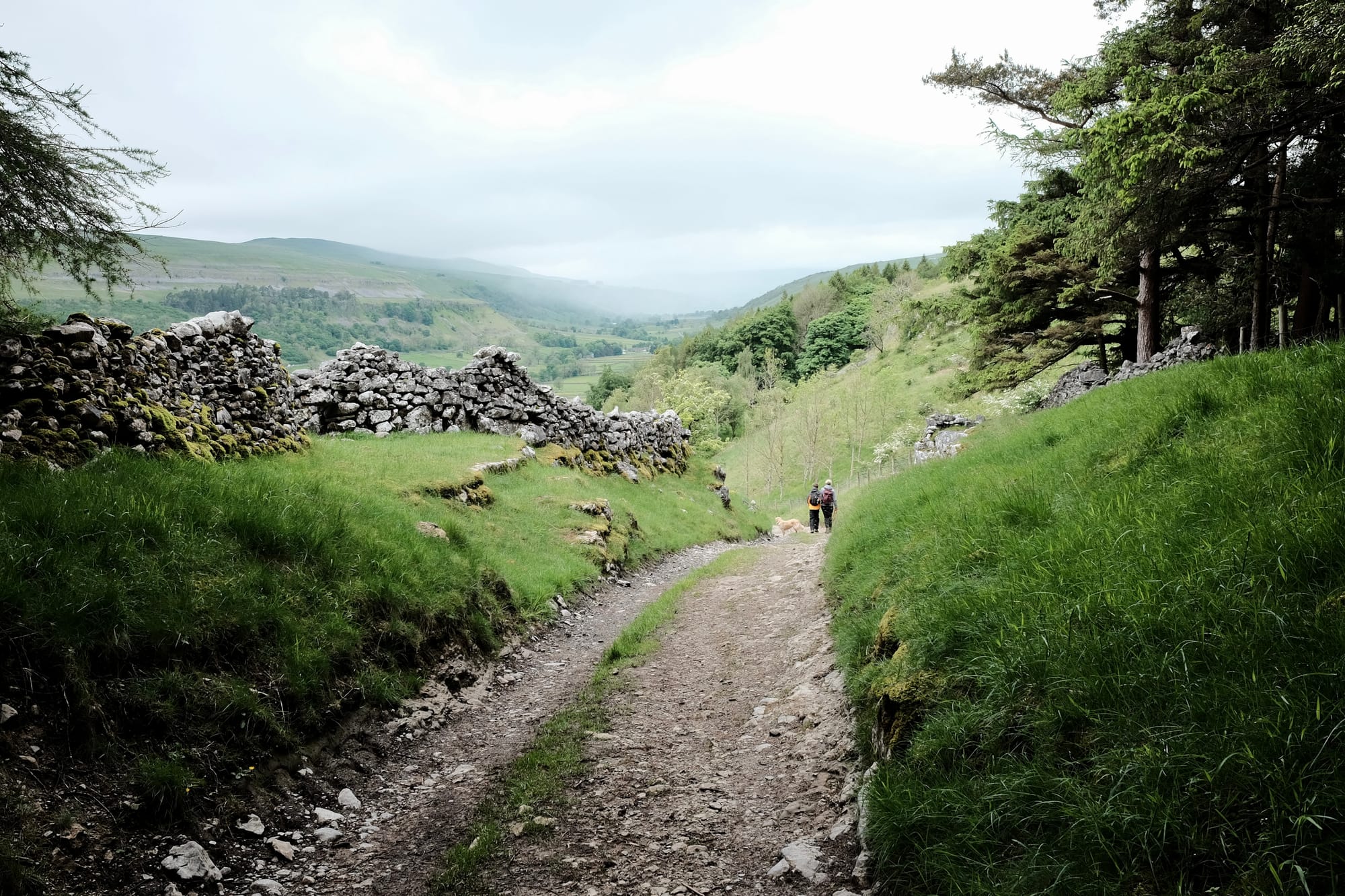Into the Dales
Walking upstream along the River Wharfe in the footsteps of Iron Age settlers and an 18th century murderer.

The duck bobbed serenely past, apparently content to let the hurrying waters of the River Wharfe whisk it downstream towards Ilkley. As for G and I, we would soon be heading in the opposite direction: from Burnsall to Kettlewell on the latest stage of our family walk along the Dales Way.
First, we had to wait with the dog while J concluded the complex logistics that come with a one-way walk in a land of sparse public transport. She had dropped the car at Grassington because the village had a couple of bus connections each day with both Burnsall and Kettlewell. So at the end of the day’s walk, if all went well, we wouldn’t be stranded and would be able to retrieve the car.
While G and I waited, we entertained ourselves with some more bird watching – swifts were swooping and darting over the river – and chatting to passing dog walkers. I was just contemplating whether the Red Lion hotel was serving breakfast when a small bus pulled up and J stepped off. No second breakfast of the day for me; it was time to get going.
We followed the river along a surfaced path, the dog bounding ahead and the water dancing beside us as if it too were excited to get going. Before long we had reached Loup Scar, where the Wharfe tumbles through a limestone fault. The water was clear, but this spot has a murky past as the place where an 18th century murderer disposed of his victim’s body.
According to our guidebook, one version of the rather convoluted tale relates that two lovers saw the murderer getting rid of the corpse. Lovers witnessing a misdeed seems a common trope in tales such as these. I can only assume that some of the stories aren't entirely true or that in the past countryside beauty spots were packed with couples interrupted in their love-making by passing murderers, highwaymen or mythical creatures.

We saw none of these things, just a few other walkers enjoying this popular path. After waiting our turn to cross the narrow suspension footbridge, we headed along the opposite bank of the river towards Linton Falls – the product of another geological fault. The preceding few weeks had been wet and the falls were in full flow. We stood for a moment, transfixed by white water and immersed in white noise, before pressing on to Grassington for lunch.
As we ate our picnic at the National Park Visitors’ Centre we let the guidebook fill us in on Grassington’s history. The village dates back to the Iron Age, apparently, when it was the site of an important settlement. Over subsequent centuries, sources of prosperity, including textiles and lead mining, came and went. Then the railway brought the tourists and they have never left, even though the railway did.
Trains still run further down the line, goods wagons serving Swinden Quarry, but regular passenger services ceased on the northern end to Grassington in 1930, less than 30 years after the railway was built. After that the line was used for excursions and goods up until 1969. By then, society had a new love – the car – and it wanted no lingering memories of its fling with the train. The tracks were ripped up and the station demolished.
Today everyone drives, or is driven. As we set off from the visitors’ centre a group of elderly tourists were staggering off a coach – presumably after somewhat of a rollercoaster ride along the winding dales roads. I was glad to be going at a slower pace. And our pace certainly did slow as we left Grassington, because the path headed up on to the moorland.
It seemed strange to be leaving the River Wharfe behind, albeit temporarily, but good to get a taste of the higher country to come in the Pennines. From Conistone Pie we could see Upper Wharfedale stretching out before us. Ahead in a future visit there would be some tough walking. For now, all that remained was the descent to Kettlewell where a reunion with the River Wharfe marked the end of this stage.

